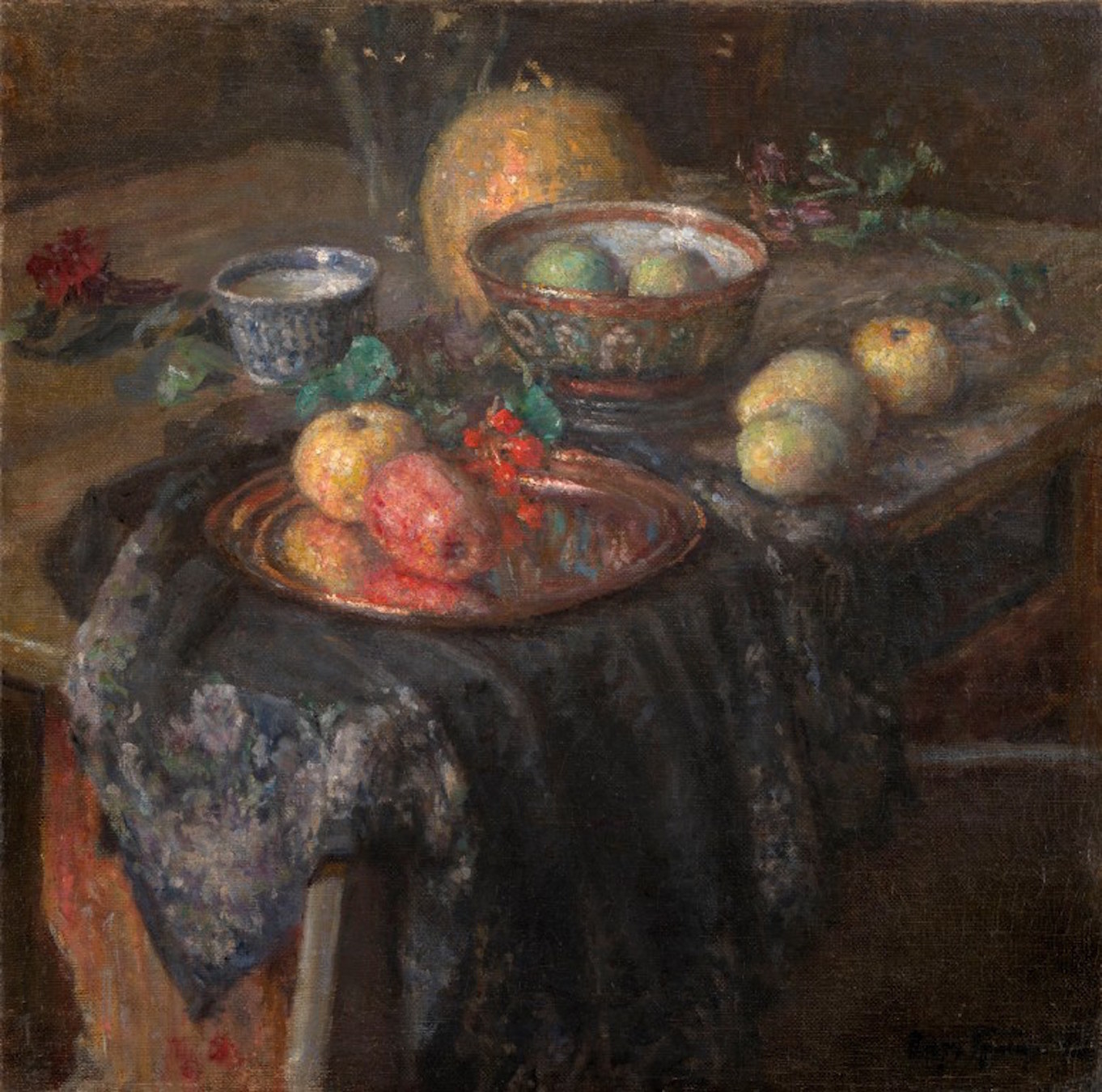2 December 2015 Russian Art Auctions
2 December 2015

* 55. GRABAR, IGOR (1871-1960)
Still Life With Apples and a Black Shawl, signed and indistinctly dated 190?.
Oil on canvas, 63 by 63.5 cm.
180,000-250,000 GBP
Provenance: Private collection, Europe.
Authenticity of the work has been confirmed by the expert I. Geraschenko.
Authenticity has also been confirmed by the expert S. Podstanitsky.
Authenticity has also been confirmed by the expert T. Ermakova.
Igor Grabar’s Still Life with Apples and a Black Shawl is a brilliant example of a genre that preoccupied him during the first few years after 1900.
Grabar first developed an interest in still life when he was teaching at Anton Ažbe’s school in Munich. There, he made the drawing of still life an integral part of his coursework, believing it would help his students enhance their sense of form and colour.
Still Life with Apples and a Black Shawl reflects all the main stylistic features of Grabar’s oeuvre of the early 1900s. The artist is particularly meticulous about the arrangement of the components of his still life, skilfully combining materials and colours. This work is a striking example of his masterful handling of the various textures, which comes through in the palpable plumpness of the ripe fruit in the foreground; the delicacy with which he portrays the highlights and reflections on the china and silver; the transparency of the crystal visible in the background; the homely feel of the heavy black shawl slung over the wooden table, contrasting to great effect with the crockery and fruit arranged upon it.
This work also exhibits a feature very typical of Grabar’s still lifes of that period, namely the use of traditional Dutch blue and white china. This is the artist’s way of drawing parallels with the images he had seen in European painting on a recent trip abroad – in this case, with the 17th century Dutch still lifes. It is quite clear, however, that this picture represents a different, modern interpretation of the genre. This interpretation, on the one hand, embraced the most progressive developments in Russian still life painting; but, on the other, was based to a certain extent on the principles of Impressionism, which Grabar had begun to incorporate in his art at that time. Here, an Impressionist influence is recognisable in the artist’s use of fine impasto brushstrokes and in the strikingly pronounced diagonal structure of the composition.
Still Life with Apples and a Black Shawl is indisputably among the most expressive and important still life compositions created by Igor Grabar in the early 1900s. Still lifes from this period grace the collections of the State Russian Museum and the State Tretyakov Gallery and can also be found in major private collections. This work is a delicate, perceptive reflection of the way of life of a manor house of the Russian gentry, exuding nostalgia for the passing era, so typical of that time, and striving to capture the finest nuances of its unique atmosphere, about to vanish forever.
Notes on symbols:
* Indicates 5% Import Duty Charge applies.
Ω Indicates 20% Import Duty Charge applies.
§ Indicates Artist's Resale Right applies.
† Indicates Standard VAT scheme applies, and the rate of 20% VAT will be charged on both hammer price and premium.